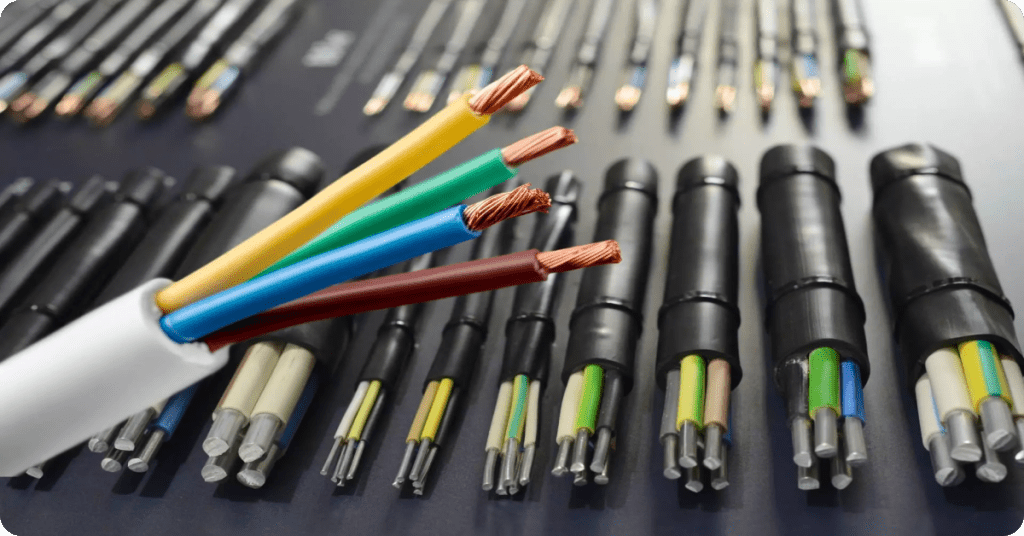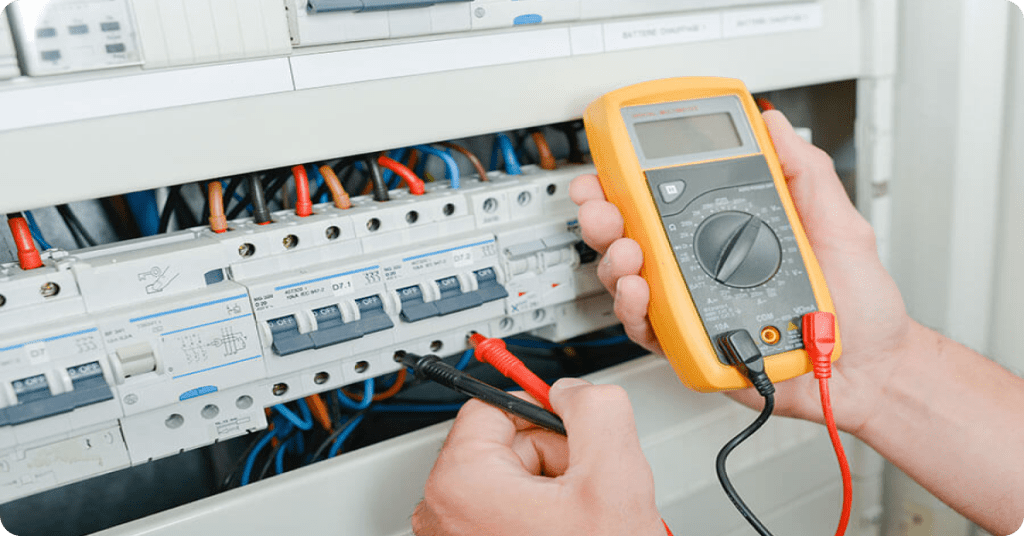Automatic Standby Generators in Detail
If you’ve already read Automatic Standby Vs. Portable Generators, you’ll know that these units are more costly than their portable generator counterparts (click here for details and installation information on portable generators). As of 2022, the most common unit (including the ATS) costs approximately $6000.00 to purchase, shipped to your home. Keep in mind this is the price of the unit and transfer switch without installation. Some companies will sell a whole package including the installation of the plumbing (natural gas or propane) and electric. This is great if they will install the unit and provide a service contract with it as well. The downside to this is any potential warranty issue. Is the contractor prepared to work on the engine should it need love during a storm when everyone else is most likely to need service too? Keep in mind this is similar to a basic car engine, outside of the scope of day to day work of even the best electrician or plumber. Purchasing from a big retailer will likely come with a warranty that will include a factory certified representative coming to fix any potential problems.
Sizing of Automatic Standby Generators
The size of an automatic standby generator and transfer switch is going to depend on the total load of your home as well as the size of your electrical service. Sizing of an automatic standby generator to power a whole house is a little more simple than portable generators because the generators can be had with much higher outputs. There is no moving them around, and the dimensions are typically about the same. Depending on how much money you can afford to spend on the unit and how many electric appliances you have in your home, most people will purchase a unit that is between 10,000-22,000W (10KW-22KW). An electric range, air conditioning, and electric dryer are the three largest loads for your decision. If you want all three to work, you’ll need to be in the 20,000W+ range, if you simply want the generator to go on to protect your refrigerator, heating system, and other light loads while you’re on vacation for instance, a smaller unit will do you just fine.
Very large, “unnecessary” loads such as spas can be “locked out” by a special module to accommodate a smaller generator. The spa for instance would increase the size of a generator about 14KW! Lots of times the bottleneck becomes the size of the gas line feeding the house when large generators are installed. As always, speak to an electrician for more precise information on what you will need. Many times, you’ll buy a slightly oversized unit because they are more readily available and very similar in cost to smaller units. Check out our Electrical Registry to find a great electrician in your area that we recommend.
Installation of Automatic Standby Generators
To better explain the installation of the generator as well as the automatic transfer switch (ATS), I broke it down in to three sections. Take a look at the following picture I put together as a reference point as the pictures in each section don’t show every electrical component in every picture.
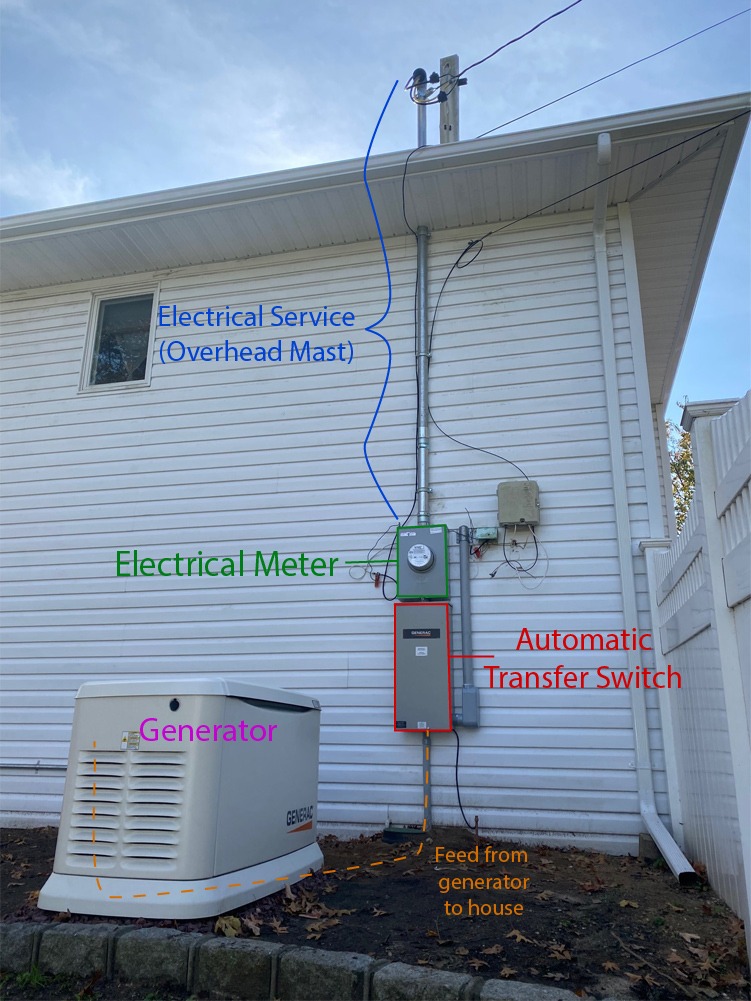
Location and Base: The location is dependent upon the requirements of the manufacturer as well as the town in which you live. The generator typically need to be 5’ from ANY opening. An opening can be a window, door, vent, etc. Clearance to the back is 18″, to both sides and the front is 36″, and above is 60″. Before the generator is put in to location a suitable base is prepared. The base is usually a poured concrete slab, preformed foam/concrete slab, or 3/4″ gravel. Here are some examples:
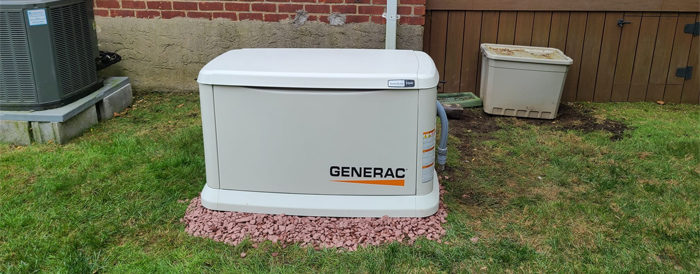
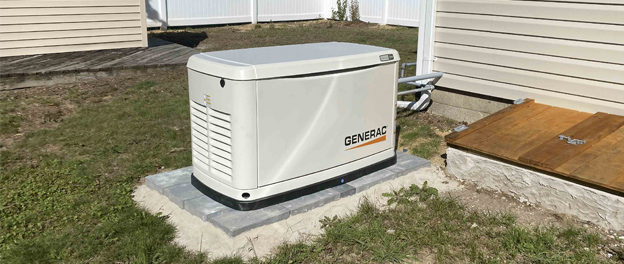
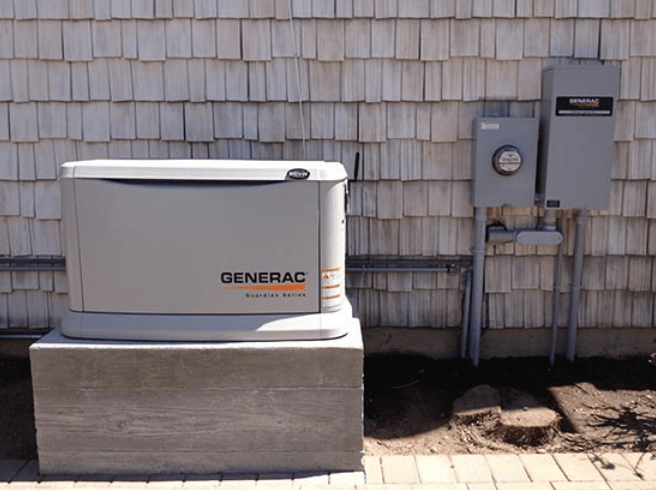
Electrical Connection: The unit is then electrically connected to your home via an Automatic Transfer Switch (ATS). The transfer switch becomes the new main disconnect for your home and is installed electrically between the electrical meter and your electrical panel. When installing the ATS, the existing electrical panel in your home will need to be rewired because it is now a subpanel and needs to have the grounding (“ground”) wires separated from the grounded (“neutral”) conductors to prevent what is called objectionable current. Become an electrician or engineer if you want to learn more about that! Here are some pictures of a transfer switch being installed and a completed transfer switch:
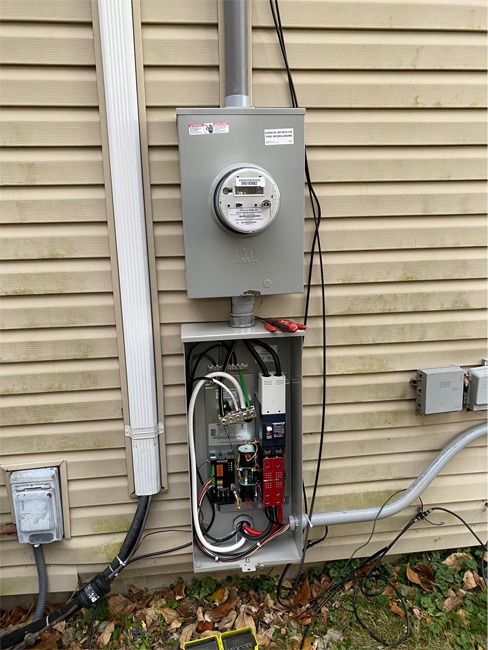
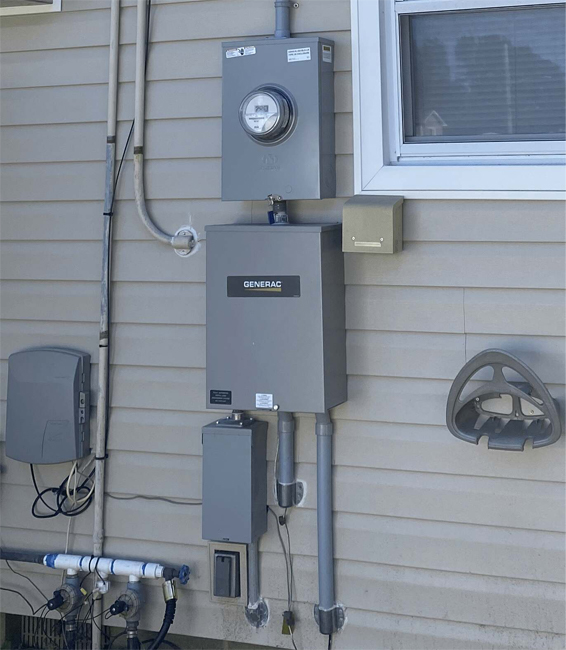
Plumbing Connection: A plumber will have to connect the generator to the gas system of the house. Your plumber will tell you if you need to upgrade the gas meter which is common because of the gas draw of the generator. If you’re in an area with no natural gas you may need to have a separate propane company install a propane tank, either buried or above ground, and plumb it in. Here’s what a typical natural gas supply installation looks like:
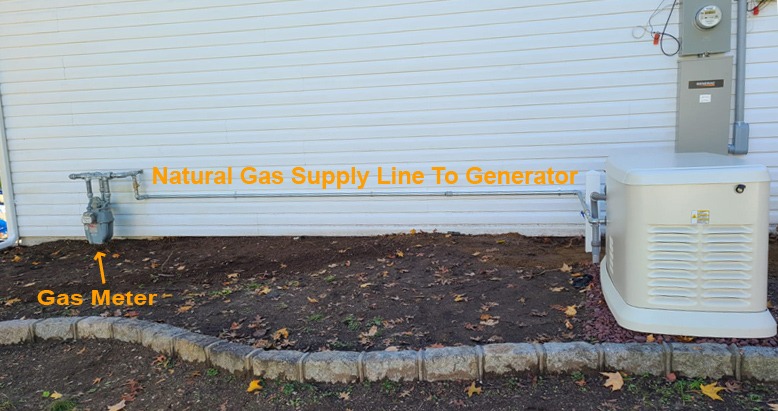
Pros of an Automatic Standby Generator:
- Effortless operation – Power goes out, power comes back on in just a few seconds. No need to go outside to turn on a portable generator. No need to be home. Big plus for folks who frequently travel and don’t want to worry about a power outage while away.
- Reliability – Automatic generators are made to be as reliable as possible. There is an “exercise” schedule where it will turn on, get fuel running through it, warm up, and make sure everything is functioning. No stale fuel, no wondering if the generator is going to work during an outage. If you know when the generator exercises (you can set it to whenever you prefer), you’ll have a good idea bout the health of the generator.
- Connectivity – In today’s world of the internet of things, there are a lot of goodies that can be connected to automatic generators to give you updates via your smartphone. Many newer generators come with a wifi module factory supplied.
Cons of an Automatic Standby Generator:
- Cost – They are the more costly method of temporarily powering a home during an outage.
- Location – You’ll need to devote a relatively open location to the unit. Some people consider it an eye sore but there are clever ways to hide it.
- Service contracts – Not necessarily a con, but you will definitely want to pay for a service contract. This will ensure your unit has clean oil, air filters, and spark plugs all of the time. You will also get service immediately if your unit malfunctions during an outage.
- Gas/Propane – You need to have a natural gas service at the home or you will need a large propane tank installed, typically underground.
Cost and Pricing
The vast majority of installations completely finished including the generator range between $10,000-$14,000. Here’s the breakdown: At the time of writing in early 2022, a 22KW Generac Generator costs about $6000 including delivery to your home. I expect this number to change as time goes on as it has increased substantially over the past few years (the technology has improved as well). In my experience Electrical Installation is typically between $2500-4000, and the plumbing for natural gas is usually between $2000-4000. Remember, it all depends on where the generator is located in relation to your gas meter and electrical panel. The further and more difficult it is to get either one of these components to the generator, the more expensive it will be for the installation. Other factors to consider include the foundation. Most installations will include the price of a gravel foundation which is more than adequate and recommended by the manufacturers. However if you live near the water you may need an elevated slab installed by a masonry or concrete company which will add another cost factor in to the mix. If you’re installing the generator with a bottled propane system, that again will be an additional cost for a propane company to install a propane tank (for generators they are large and sometimes buried underground).
Brands of Automatic Standby Generators
There are numerous brands out there producing and selling automatic standby generators and transfer switches. I don’t want to specifically recommend any one generator right now but I can tell you I’ve personally installed Generac, Briggs & Stratton, Kohler, and CAT generators. The most common automatic standby generator setup we see and install are Generac. While the installation process for the various brands is nearly identical, some people prefer one over the other in terms of noise, size in some cases, and price. I’ll eventually put together an article comparing the various units that are commonly used for homes but for now I don’t have a specific opinion to share.
Closing Thoughts
I know this was a lot of information to take in but it is my hope that the above will help you understand your options and to avoid being taken advantage of during a generator buying frenzy as so commonly happens. As always, ensure you have a licensed electrician and licensed plumber doing the installations. We have a comprehensive list of Electricians that specialize in generator installs in our Electrical Registry here. If you have any questions feel free to leave a comment and I’ll respond as best and quickly as I can. Thanks for reading!
An automatic standby generator (installed) on average costs between $10,000-$14,000. The common 22kw Generac whole house generator itself will cost around $6000 delivered to your home.
Installation of a whole house generator starts with an automatic transfer switch, relocation of the main breaker, and wiring of the automatic generator itself. Plumbing is installed via natural gas or propane. Installation typically takes about 2 full days.


